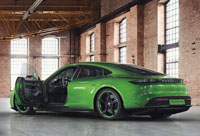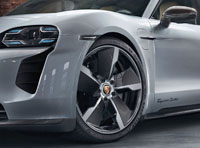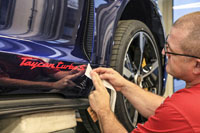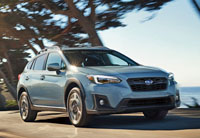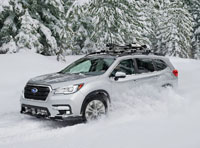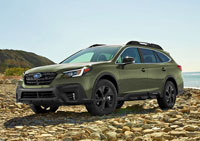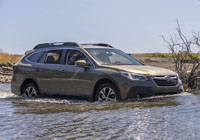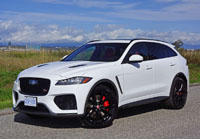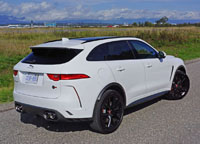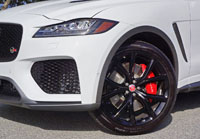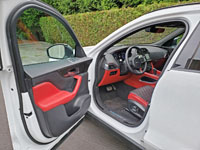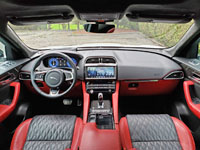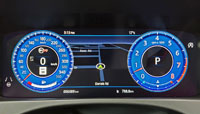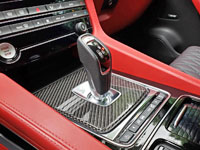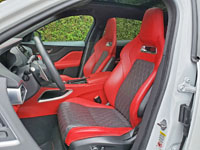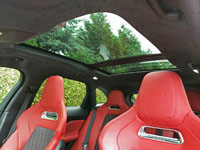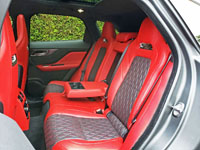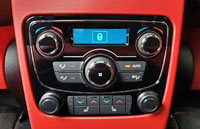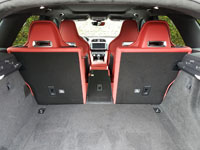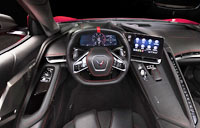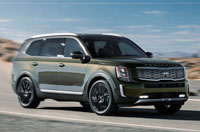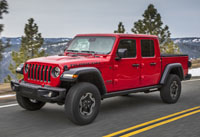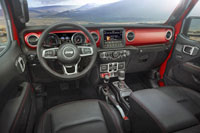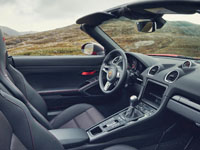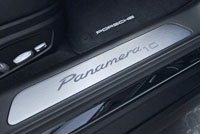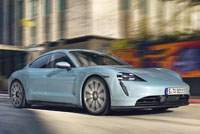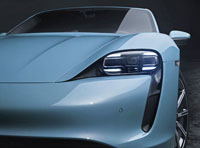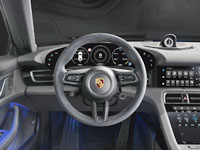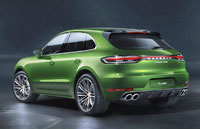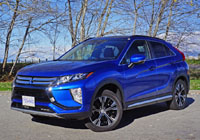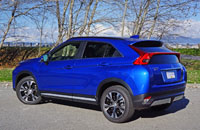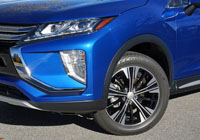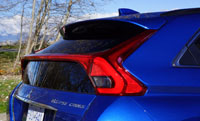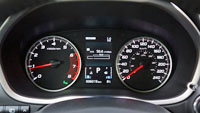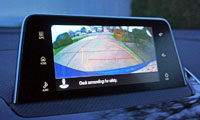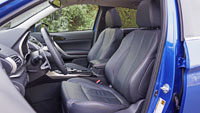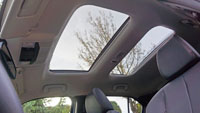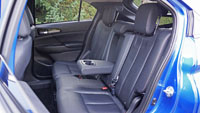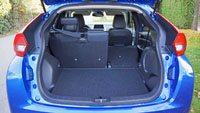
The car you’re looking at has given up on Canada and moved to the States. Yup, it’s true. Call it a traitor if you want, but Hyundai’s subcompact Accent Sedan won’t be available north of the 49th after this 2019 model year, so if you’ve always wanted to own a new one you’d better act quickly.
Fortunately for us, the more practical hatchback version is staying, complete with a new engine and new optional continuously variable transmission, the latter replacing the conventional six-speed automatic found in the 2019 Accent Sedan being reviewed here. The U.S., incidentally, loses the hatchback variant that we prefer. How different our markets are, despite (mostly) speaking the same language and being so close.
So why is this subcompact carnage occurring? It comes down to sales, or a lack thereof. Hyundai Canada only sold 202 Accents last month, but it’s brand new Venue crossover SUV, which is more or less the same size as the Accent hatch, yet an SUV so it’s going to be much more popular, sold 456 units in its first-ever month of January 2020. I think the Venue is going to sell big time, as I’ve been driving one in between writing this review of the Accent, and am thoroughly impressed. It’s also the least expensive SUV in Canada, which won’t hurt its popularity either.

I’m not sure if the Venue will surpass Kona sales, the larger utility finding 1,651 buyers last month and an amazing 25,817 during its first full year of 2019, which incidentally saw it first in its subcompact class (the same segment the Venue is entering now), resulting in a shocking 7,000-plus units ahead of the Nissan Qashqai. So car fans should be happy Hyundai kept its Accent here at all, especially considering how many of its peers have departed over the past couple of years for the same reasons (like the Nissan Versa Note, Toyota Prius C and Yaris Sedan, Chevy Sonic, Ford Fiesta, etc).
At least the Accent remains near the top of its class, only outsold by its Kia Rio cousin last month, 243 deliveries to the Accent’s aforementioned 202, but beating the Yaris’ 190 sales, a car that took the top spot away from the Accent last year, a position Hyundai has held for as long as I can remember. Who knows which subcompact car will be in the lead when the final tally gets sorted out once December 31, 2020 has passed?
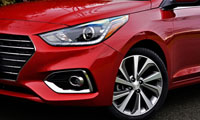
Most of us should be able to agree that this 2019 Accent Sedan won’t do much to increase the Accent’s overall numbers this year. Certainly Hyundai will appreciate your buying one of the handful remaining, and yes I checked and there are plenty of retailers with new ones in stock across the country, but more dealers have sold out and are therefore saying hello to the updated 2020 Accent Hatchback, which looks identical yet gets the revised engine I mentioned earlier in this review, plus a totally new optional continuously variable transmission (CVT), the latter in place of the now departed six-speed automatic gearbox integrated into my 2019 tester.
I must admit to having divided feelings about these mechanical upgrades, because the changes seem to be only benefiting fuel economy at the expense of performance. This 2019 Accent boasts a reasonably strong 132 horsepower from its 1.6-litre four-cylinder engine, plus 119 lb-ft of torque, whereas the fresh new 2020 model’s 1.6-litre four features some cool new “Smartstream” tech, but nevertheless loses 12 horsepower and six lb-ft of torque, the new ratings only 120 and 113 respectively.
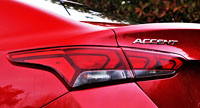
To clarify, the Accent’s Smartstream G1.6 DPI engine has little in common with the Smartstream G1.6 T-GDi engine found in the new Sonata. The Accent’s engine is naturally aspirated with four inline cylinders, dual-port injection (DPI), continuously variable valve timing, and a new thermal management module that warms the engine up faster to optimize performance and efficiency, whereas the Sonata’s four-cylinder is downright radical in comparison.
That turbo-four is configured into a V, which will be fabulous for packaging into smaller engine bays of the future and ideal for mating to hybrid drivetrains that could potentially fit into the engine bays of current models. It puts out 180 horsepower and 195 lb-ft of torque due, in part, to an industry-first Continuously Variable Valve Duration (CVVD) system that improves straight-line performance by four percent while improving fuel economy by five percent and reducing emissions by 12 percent. A Low Pressure Exhaust Gas Recirculation (LP EGR) system helps Hyundai to achieve the last number, but I’ll get into more detail about its advanced tech when I review the new 2020 Sonata Turbo.

Respect should be paid to the technology behind the Accent’s new Smartstream G1.6 DPI engine, but clearly it’s more of an upgrade to an existing powerplant than anything revolutionary. Still, the new model’s improvement in fuel economy needs to be commended, with the 2019 Accent being reviewed here good for just 8.2 L/100km city, 6.2 highway and 7.3 combined whether employing its standard six-speed manual or available as-tested six-speed automatic, and the new 2020 Accent managing an impressive 7.8 L/100km in the city, 6.1 on the highway and 6.9 combined with its six-speed manual gearbox or 7.3 city, 6.0 highway and 6.6 combined with its new CVT—the latter number representing 12-percent better economy.
As for the six-speed automatic in the outgoing Accent I’m reviewing here, it shifts smoothly, delivers a nice mechanical feel and even gets sporty when the shift lever is slotted into its manual position and operated by hand, so traditionalists should like it. Still, the 2020 Accent’s available CVT, called ITV by Hyundai for “Intelligent Variable Transmission,” should be thought of as an upgrade. Hyundai claims it simulates shifts so well you won’t be able to tell the difference (we’ll see about that), and don’t worry I’ll say how I really feel in a future road test review. Fortunately, CVTs are usually smoother than regular automatic transmissions, unless the simulated shifts are a bit off. Again, I won’t explain all the details that make Hyundai’s new CVT better than the rest, saving this for that model’s review, but for now will say that it features a wide-ratio pulley system Hyundai claims to provide a broader operation ratio than older CVTs, which improves fuel economy when higher gear ratios are being used and enhances performance when lower ratios are employed.

The 2019 Accent Sedan delivers sportier performance than most in this class, thanks to the powerful little engine noted earlier, plus the engaging manual mode-enhanced gearbox, while its ride quality is comforting due to a well-sorted front strut and rear torsion beam suspension system, and should continue being good in the new 2020 as Hyundai doesn’t make any noted changes. Handling is also good, or at least good enough, the Accent’s electric power steering system delivering good directional response and overall chassis quite capable through the corners if kept at reasonable speeds. Hyundai incorporates standard four-wheel disc brakes, which do a good job of bringing the Accent down to a stop quickly, making the car feel safe and stable at all times.
Changing course, the Accent’s cabin is quite roomy for such a small car, particular when it comes to headroom. Legroom up front is pretty good too, and it should amply sized from side-to-side for most body types, plus I found the driver’s seat and steering wheel easy to position for comfort and control due to good tilt and telescopic steering column rake and reach. While all of the usual seat adjustments are included, there was no way to adjust the lumbar, but the seat is inherently good so I felt supported in all the right places.
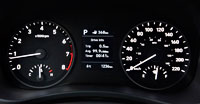
Most cars in this class are tight in the back seat, and the Accent Sedan is no exception. Still, but two average-sized adults or three slender passengers, kids included, should fit in with no issue. I positioned the front seat for my longer legged, shorter torso five-foot-eight frame and had approximately two inches remaining between the front seatback and my knees, plus ample room for my feet while wearing winter boots. The seatbacks are finished in a nice cloth, which would be more comfortable if they touched my knees, but I doubt anyone wants to experience such a confining space either way. My small-to-medium torso felt comfortable enough as far as interior width goes, with about three to four inches at the hips and slightly more next to my left shoulder to the door panel, while about two and a half inches of nothingness could be found over above my head (not in my head… I can hear the jokes coming).
Hyundai doesn’t provide a folding armrest in the middle, however, so it lacks the comfort of a larger car like the Elantra or aforementioned Sonata, plus no vents provide air to rear passengers, but Hyundai does include a USB charger for powering passengers’ devices on the backside of the front console.

What about refinement? Strangely, Hyundai isn’t following the latest subcompact trend to pliable composite surfaces in key areas, which means others in this class are doing a better job of pampering occupants, at least in the touchy-feeling department. The dash top, for instance, and the instrument panel, door panels and most everywhere else is hard plastic, other than the leather-wrapped steering wheel of this top-line Ultimate model, plus the fabric door inserts, centre armrest, and cloth upholstered seats, of course. Unforgivable in the Canadian market, however, are hard shell plastic door armrests, which are downright uncomfortable.
Cutting such corners is a shame in a vehicle that does most everything else so well, although I should also criticize Hyundai for including an antiquated monochromatic trip computer in this top-line trim. It should be a full-colour TFT multi-information display this day and age, and on that note I don’t have a problem with its analogue gauges, even though some competitors are now beginning to digitize more of their clusters.
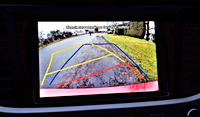
I’m guessing that Hyundai is hoping such shortcomings get forgotten quickly when the Accent’s potential buyers start adding up all the other standard and optional features before comparing its low pricing to competitors. On top of everything already mentioned my top line Accent Sedan came with proximity access with pushbutton start/stop, a fairly large centre touchscreen with Apple CarPlay, Android Auto, a host of downloadable apps, a rearview camera with active guidelines, plus much more. A single-zone automatic climate control makes sure the cabin is always at the right temperature, while my tester included three-way heatable front seats plus a heated steering wheel rim, the former capable getting downright therapeutic for the lower back.
The leather-wrapped steering wheel rim just mentioned is beautifully finished and nicely padded for comfort, while its spokes’ switchgear is very well done and complete with voice activation, audio controls, plus phone prompts to the left, and multi-information display plus cruise controls to the right. The turn signal/headlamp and wiper stalks are pretty premium-level as well. In fact, most of the interior buttons, knobs and switches make the Accent feel more expensive than its modest price range suggests. The same goes for the overhead console, which integrates yesteryear’s incandescent lamps yet boasts one of the most luxe lined sunglass holders I’ve ever felt, as well as a controller for the power moonroof.
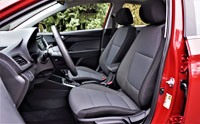
The Accent Sedan’s rear seats fold individually in the usual 60/40-split configuration, adding more usability to the reasonably sized 388-litre (13.7 cu-ft) trunk, but this said the trunk lid is quite short which limited how much I could angle inside. Of course, a hatchback would solve this problem, so we should be glad Hyundai Canada chose to keep the more versatile of the two body styles for 2020. Hyundai provides a fairly large compartment underneath the load floor no matter which model is chosen, my tester’s mostly filled with a compact spare and the tools to change it, but there’s some space around its perimeter for smaller cargo.
So that’s the 2019 (and some of the 2020) Accent in a nutshell. If you really want a new Accent Sedan, you’d best begin to call all the Hyundai retailers in your city. I’ve checked, and some were available at the time of writing, but I’d recommend acting quickly. According to our 2019 Hyundai Accent Canada Prices page found right here on CarCostCanada, the most basic Accent Sedan in Essential trim with the Comfort Package starts at $17,349 (plus freight and fees), whereas this top-tier Ultimate Sedan can be had for $21,299, less discount of course. Retailers are motivated to sell, after all, so make sure to get a CarCostCanada membership to access info about manufacturer rebates, plus factory leasing and financing rate deals, which were available from zero percent at the time of writing (plus 0.99 percent for the new 2020 Accent), and as always your membership will give you access to dealer invoice pricing that could potentially save you thousands on a new car.

As far as Accent Sedan alternatives go, Kia is keeping its Rio Sedan for 2020 (its basically the same as the U.S.-market Accent Sedan below the surface), and it also includes all the 2020 drivetrain improvements mentioned earlier in this review. As of the 2020 model year the Rio has become the only new subcompact sedan available in Canada, so South Korea’s alternative automotive brand has a good opportunity to lure in some new buyers it might not have been able to previously, while they’re still selling a 2020 Rio Hatchback.
Therefore you’ve got the option of snapping up this 2019 Hyundai Accent Sedan while some are still available, choosing the new 2020 Accent Hatchback with all of its mechanical updates, or opting for the same improvements in the Kia Rio Sedan or Hatchback. This said, maybe a new Hyundai Venue or Kona suits your style, as these two are superb subcompact crossovers only slightly more money. All in all it seems like Hyundai Motor Group has you covered no matter what you want in an entry-level vehicle, so the automaker’s future certainly looks promising.
Story and photo credits: Trevor Hofmann


